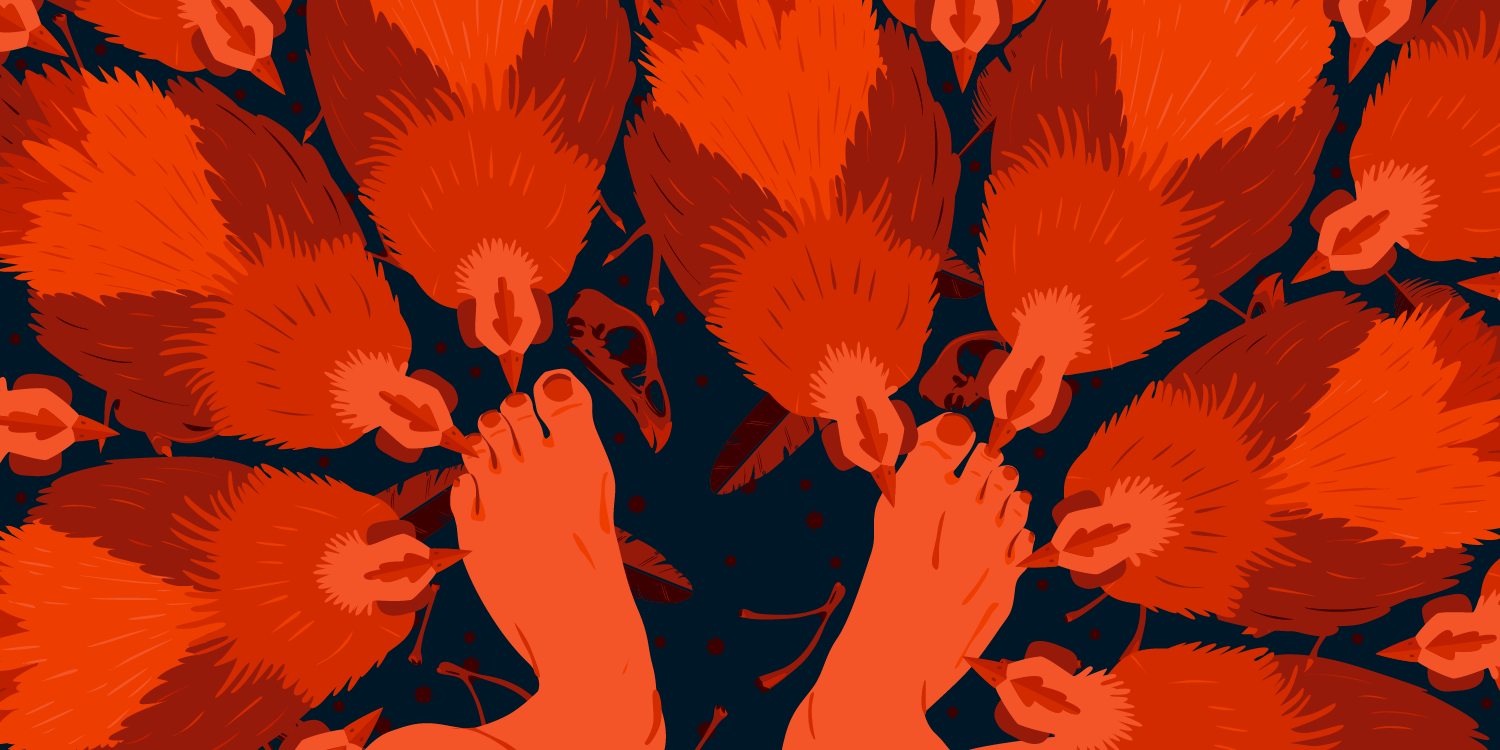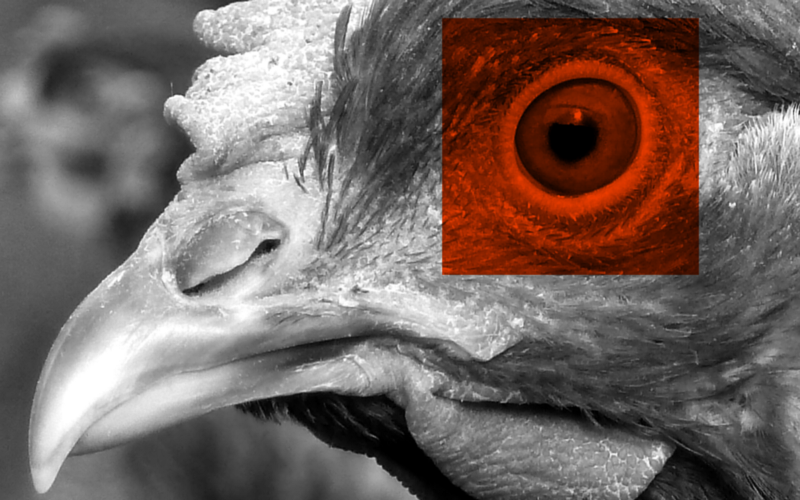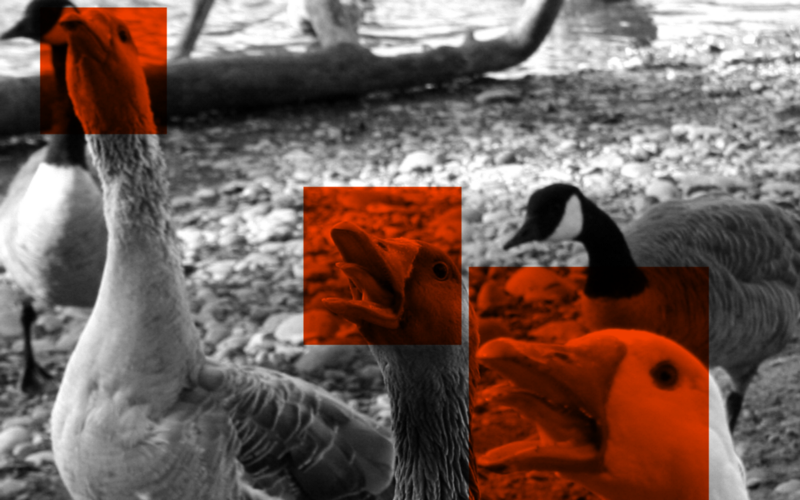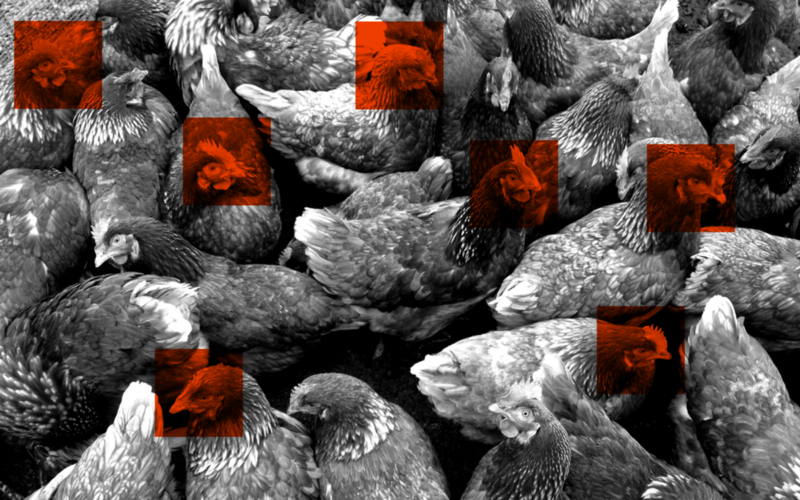

Read the next installment: “Evolution: How a virus becomes a threat”
Read the previous installment: “Foreshadowing: How avian flu shaped the Great War“

On February 4, 2003, an eight-year-old girl who was touring China’s Fujian province with her family suddenly fell ill and died. Three days later, while her death was under investigation, the girl’s 33-year-old father developed respiratory problems. The family returned to Hong Kong, where they lived, to mourn and recuperate. But on February 11, the father was admitted to hospital with acute pneumonia. He too died, six days later. During a postmortem investigation, doctors found traces of the H5N1 virus in his corpse.
Six years earlier, 18 people had been infected with this new and deadly strain of bird flu in Asia. Six of them died. The response from Hong Kong’s authorities had been swift and apocalyptic: a cull of Old Testament-scale proportions. Close to 1.5 million birds–chickens, ducks, and geese–were slaughtered in the space of a few days. They hoped that the virus would die with the animals, and the looming threat hanging over the city would pass. In the days that followed, a fleet of doctors, virologists, and epidemiologists waited for the worst. But nothing happened. The bird flu pandemic, it seemed, had been extinguished before it had truly begun.
In the aftermath, a delegation from Influenza Division at the U.S. Centers for Disease Control and Prevention traveled to Hong Kong. They hoped to discover whether the threat of H5N1 had truly been eliminated, and what might be done to further improve the human response during a future outbreak. “But when we got there it was a dog-and-pony show,” says Nancy Cox, then director of the division. “It was very difficult to obtain any information. Everything was kept under wraps.”

Faced with the threat of a city-killing virus, the Chinese government had been eager to collaborate with experts across the world, sending samples for testing in far-flung labs. Now that the danger had seemingly passed, the lines of communication had been closed, as the agricultural industry worked to stave off any further profit-threatening measures.
It was clear that the killer H5N1 virus had originated in geese, ducks, and quail in Guangdong, the South China province that borders Hong Kong. It had then moved to chickens, pigs, and humans. But that was where the trail went cold. “We never really heard how many birds died, or a specific location of where in Guangdong the disease had originated,” says Cox. “There was no transparency.”
The cull had squashed H5N1’s short-term chances. But the government’s throttling of information ensured that the disease had long-term prospects. In the rush to control perceptions, the deep roots of the problem had been overlooked.

In 1997, the cull had seemingly cleansed Hong Kong of the fowl plague. But its residents continued to get meat from chicken farms in the surrounding province of Guangdong, where farmers’ intensive and often arcane methods remained unchanged.
It was one particular method of farming that had likely prepared H5N1 to make the transition from birds to humans–and it was still widespread. Sometimes known as “pen-hen-fish aquaculture,” chickens’ battery cages are placed directly over feeding troughs in pigpens, which are in turn positioned above fish-ponds. The idea is to create a virtuous cycle of nutrition: the pigs eat the bird droppings, then the pig droppings are used to feed fish or fertilize aquatic plants. In some cases, human excrement is added to the ponds for additional enrichment. The pond water is then used as drinking water for the pigs and chickens.
In some areas of Guangdong, this method of farming has been encouraged by international aid agencies for its cost and efficiency. But it provides a churning melting pot for viral mutation, with wide potential to splice pig and bird viruses as they travel circuitously through the animals, made worse when wild ducks and geese drink the water in the farmed fish ponds. A natural and harmless influenza virus found in duck intestines is excreted into the water where it completes, as Robert Webster, author of the Textbook of Influenza, once put it, “veritable witches’ brew of avian influenza.”

Duck viruses, which are harmless to humans, have been found in ponds, lakes, and rivers around the world for millions of years. But with intensive farming systems, avian influenza has been given new paths to speedily cycle through the food chain, gaining mutations that help it hitch to new species. In its newly-fortified form–now contagious to humans–it’s carried in trucks along roads into the city, like a leaf carried along a river.
Recently, Hong Kong residents have seen the rise of supermarkets, but in the late 1990s and early 2000s, live bird markets were one of the most popular places to buy meat. The 2004 Encyclopedia of Meat Sciences put the market share of street vendors in the city at 90 percent. If you walked down any number of roads in Hong Kong around that time, you’d pass through a tunnel of cramped cages, sometimes stacked five high on top of each other, filled with chickens, ducks, geese, and quail.
In order to buy the freshest meat possible, customers would handle live birds. When one had been chosen, the vendor often killed the bird on the spot, and blood, intestines, feathers, and feces inevitably mingled. The close quarters acted much like the trenches of the Great War–in 1918, a similar deadly virus found an incubator of stress, filth, and crowding in which to mutate and spread. Live bird markets have been described by U.S. Department of Agriculture poultry researchers as the “missing link in the epidemiology of avian influenza.”
“Clearly the most effective way to halt the spread would have been to close the bird markets, move to centralized slaughtering methods in conjunction with bird vaccination,” says Cox. Such drastic measures, however, would have required both a cultural and a commercial shift.
In the wild, meanwhile, migratory ducks and geese that had drunk from the infected ponds opened their wings and began the long journey to nest in Siberia and South Korea. The idea that humans had eradicated H5N1 by simply killing a few hundred thousand chickens in the city was laughable. Re-emergence was just a matter of time.

It was 2003 when the virus returned, with the death of the eight-year-old girl in China. Infection rates among farmed chickens flared up and, for the first time, H5N1 was detected overseas, first in South Korea, then in Japan. By July, birds were dying in Thailand, but rather than follow the Hong Kong authorities’ example, the Thai government did not order a widespread slaughter to bury the disease.
This reticence to act was twofold. Without local deaths to sway public opinion, there wasn’t impetus to order a mass cull. But there was also the problem of documenting new cases of bird flu in Thai birds. During mass culls in Thailand, bird owners receive around 50 baht, about $1.50, in compensation for each chicken killed–a fee that’s less than the bird’s market value for meat. This low sum offered little motive for bird farmers to report new cases for fear of their whole operation being shut down.
But farms weren’t the only way that the virus was spreading. In January 2004, six-year-old Kaptan Boonmanuj sat petting his uncle’s fighting rooster in the backyard of the family home in Thailand. Within a few weeks, Boonmanuj was the first victim to be killed by bird flu in the country. Thailand is home to an estimated 15 million fighting cocks, and a champion bird can be worth up to $1,000. As H5N1 spread through Thailand, the owners of these birds began to hide them from the authorities, fearing that they’d be ordered to put them down.

At the time, Thailand’s Deputy Agriculture Minister told the Bangkok Post, “Controlling the epidemic in the capital is now beyond the ministry’s competence, due to strong opposition from owners of fighting cocks, who keep hiding their birds away from livestock officials.” Within weeks, H5N1 had also been found in fighting birds in Malaysia, whose government later blamed cockfighters traveling across the border for spreading the virus.
By February 2004, H5N1 had been detected in 10 countries. A number of human deaths were reported, as well the deaths of dozens of tigers at Thailand’s Sri Racha Tiger Zoo. No single cull or ban on live bird markets could stop the virus now. The disease was propagating through a combination of commercial, cultural, and social factors, coaxed and steered by human structures and systems that touched upon every area of life, from farming to food, conservation to entertainment.
Viruses spread using whatever means are available to them. In 2015, for example, the CDC’s Influenza Division investigated a major upsurge in cases of avian influenza in Egypt. “What we found from talking to people was that the recent winters had been so harsh that people were bringing their birds into their homes,” Cox said. In some parts of the world, there is a custom of kissing one’s chickens on the beak.
Meanwhile, planes, roads, sea routes, and the migratory patterns of birds provide ever-spreading paths down which a virus can travel. Today, H5N1 and its equally-deadly relation, H7N9, have been found in almost a quarter of all countries, from Afghanistan to Great Britain, Cyprus to Bhutan.

While live bird markets are still common in China, bitter experience has transformed the way in which birds arrive in Hong Kong. Today, the journey that a chicken makes from a farm in Guangdong province to a Hong Kong dining table is as meticulously planned, documented, and chaperoned as that of a head of state, or film star traveling between cities (albeit with none of their creature comforts).
While the chicken is still on the farm where it was hatched, blood and mucus swabs are taken as each batch of hens is tested for the human-threatening H5 and H7 viruses. Healthy birds are issued with “Blood Test Certificate and Poultry Transportation Authorization” documents.
In the early evening, a sterilized truck arrives at the farm, and the bird is loaded into a freshly-cleaned cage in the back. When the truck is full, the rear inside of the vehicle is sealed in plastic while the outside is again sterilized before it begins the journey to Hong Kong.
Before midnight, the vehicle arrives at Cheung Sha Wan Temporary Wholesale Poultry Market, now the only remaining wholesale bird market currently trading in Hong Kong. Around a hundred thousand chickens arrive this way every single day.

The plastic seal is broken, documents checked. If there is any mismatch of information–the number of cages, the number of birds within those cages, the blood test certificates–then the consignment is detained. Once cleared, the bird is transferred to new cages, and the vehicle’s registration is logged, tagged, and fixed to each cage. Overnight, each batch of birds is again checked for avian influenza, while the vehicle is further scrubbed.
The precision and care of this system, as efficient and effective as any other in the world, has been earned and continually fortified through painful experience. But it did not happen quickly. In 1997, it was multiple incidents of H5N1 detected in poultry at the Cheung Sha Wan Temporary Wholesale Poultry Market that led to the initial cull of 1.5 million birds. In 2001, H5N1 was again detected in 10 live poultry outlets, leading to the slaughter of another 1.4 million birds. The following year, a million more birds were killed when the wholesale market was again found to be incubating the deadly virus.

Most experts agree that to date, we’ve been spared a true bird flu pandemic not through caution, education, design, or preparedness. We’ve simply been spared because the virus is constrained by its need to be transferred from birds to humans. It cannot yet travel between people.
“We are indeed lucky so far that a virus strain has not developed that satisfies the conditions of being a new virus that is highly lethal and easily transferable from person to person,” said Dr. Irwin Redlener, Director of the National Center for Disaster Preparedness at Columbia University. “However, mutations happen quickly and new virus forms arise frequently. It is almost inevitable that we will eventually see a new strain capable of causing a true pandemic.”

Once a bird flu virus mutates to satisfy these conditions, it will be far harder to stop. “What we see today is the potential for a virus that, through mutation and re-assortment, gains the ability to be transmitted from human to human, and then spread with airline speed around the globe,” says Cox. “If the virus had even a 2 percent case fatality rate it would be devastating. Bird flu’s fatality rate is closer to 50 percent.”
But how exactly does a virus mutate? How long do we have till H5N1 and its similarly deadly relative, H7N9, gain the necessary capacity to spread at, as Cox puts it, “airline speeds”–even through the very air that we breathe? The answer lies under microscopes and in the lungs of ferrets, and in the next installment of our story.

Read the next installment: “Evolution: How a virus becomes a threat”
Read the previous installment: “Foreshadowing: How avian flu shaped the Great War“

How We Get To Next was a magazine that explored the future of science, technology, and culture from 2014 to 2019. Fowl Plague is a five-part series that explores the history of deadly global pandemics–and asks whether we’re ready to respond to the next one.
